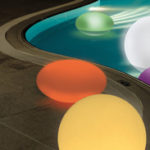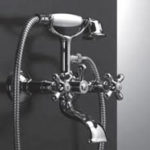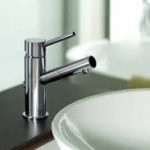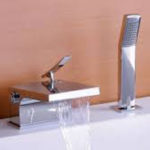Group therapy, led by a therapist, can give you the benefits of therapy along with the support of other members. Relapses happen during rehabilitation, but what’s important is how you move forward from it. You may want to talk with a loved one or therapist about why it happened and what you can do differently next time. For snacks, choose foods that are high in carbohydrates, such as pretzels, crackers, or apples, which can help satisfy cravings. Keep it interesting and varied with sparkling water, virgin cocktails (also known as mocktails), fruit juices, low-fat milk, or kombucha.
Studies show support groups play an instrumental role in helping people develop healthy social networks that result in continued sobriety. For those with alcohol use disorder, withdrawal is just the first (but very important) step on a long journey to recovery. These first few weeks are critical because they are is there a difference between a sober house and a halfway house when the risk of relapse is highest. For people who experience hallucinations as part of alcohol withdrawal, these may begin in the 12- to 24-hour time frame. If you are a strong alcoholic, then it’s important for you to include fresh, homemade juices in your diet in order to get rid of your alcohol addiction.
Alcohol abuse can lead to short-term consequences like alcohol poisoning, or long-term consequences like high blood pressure and stroke. Alcohol dependence is when the cells of the body have adjusted to the presence of alcohol, and a person experiences symptoms of withdrawal when they stop drinking. Watching a friend or family member suffer from alcoholism is deeply distressing and frustrating. To help the person stop drinking, you’ll need to confront them and try to support them as they get help. Tell them that you’re worried, that you care about them, and that you want them to get help. If the person is open to getting help, offer to put them in touch with a professional.
She incorporates cultural relevance and non-traditional interventions and strategies to strengthen her clients’ steps towards goals of behavioral, emotional, social and mental wellness. If you’ve become dependent on alcohol, cutting it out of your life may produce withdrawal symptoms, such as a rapid heartbeat, high blood pressure, sweating and shaking. Psychological symptoms can include irritability, anxiety and restlessness. Typically, alcohol withdrawal symptoms happen for heavier drinkers. Alcohol withdrawal can begin within hours of ending a drinking session.
- Non-medical environments are often not safe for the alcohol detox process.
- Her fields of interest include Japanese translation, cooking, natural sciences, sex positivity, and mental health, along with books, books, and more books.
- A doctor or psychiatrist can offer more information and help you explore possible treatment plans.
- When you drink alcohol, your body breaks it down into acetaldehyde.
You could even go all-out and reward yourself with something big with a major milestone like a year alcohol-free — a vacation sounds lovely, for example. Use these tried-and-true tips to quit or reduce your alcohol intake. In a large-scale study of alcohol treatment methods, researchers found that a combination of medical management, medication, and cognitive-behavioral interventions was most effective. The study also showed that there was no single treatment approach that was right for every individual. If you experience symptoms of DT, such as confusion, disorientation, hallucinations, or delusions, seek medical attention immediately.
Distracting withdrawal symptoms may make it challenging to focus on proper nutrition during a home detox. People with alcohol use disorder are more likely to have nutrition deficits, especially B vitamins like thiamin. Eating right will drastically improve the chances of successful alcohol detox.
Don’t cut out all ultra-processed food – make a few easy swaps
While cirrhosis scars from excessive drinking are irreversible, quitting alcohol and leading a healthier lifestyle can help your liver heal from alcohol-related liver disease. Alcohol detox isn’t easy and not everyone can do it on their own. That is why alcohol detox and alcohol withdrawal treatment is administered by medical professionals. Some people try home remedies to stop drinking alcohol because they don’t want medical treatment. Home remedies are methods that people may try at home to stop drinking alcohol. Some turn to home remedies because they do not want to enter medical treatment.
Your health care provider or mental health provider will ask additional questions based on your responses, symptoms and needs. Preparing and anticipating questions will help you make the most of your appointment time. If that’s not possible, admit your desire to drink and don’t judge moderate, heavy, binge yourself for it. Call or text a friend and have your goals handy to remind yourself why you’ve dropped drinking. You might turn to friends, family, and loved ones for this type of support, but this can be challenging if your past alcohol use has alienated people in your life.
Symptoms of Alcohol Withdrawal: Timeline and Signs of Danger
To determine whether—and where—you fall in the alcohol use disorder (AUD) spectrum, answer the following questions. Detox in a controlled environment can improve the chances of treatment success because there are no learned habits (or access to alcohol) in a treatment setting. When you consider how to go about giving up alcohol, account for factors like how much you drink and your reasons for drinking.
Free Healthbeat Signup
This helps you in the 5K, but also in longer distances from half marathons to marathons. According to Robin Dunbar, a professor of evolutionary psychology, we should think of friendship as existing in layers. The first layer consists of the people you’d call at 4am in a crisis – and we only really have enough time to pursue these sorts of friendships with up to five people. It can be hard to set boundaries between work and your personal life, especially when we are working from home or constantly available via email. Use your phone’s “do not disturb” function to turn off notifications from work contacts in the evening and days off.
Remove alcohol from your house.
Comparing the emotions that come up when you have a drink with the feelings you experience when abstaining also helps you recognize when drinking doesn’t fix the problems you’re trying to manage. When you drink alcohol, your body breaks it down into acetaldehyde. Your liver neutralizes acetaldehyde with a substance it makes called glutathione. There are many support options available that can help guide you through alcohol withdrawal, as well as abstaining from alcohol after withdrawal. People who drink daily or almost every day should not be left alone for the first few days after stopping alcohol.
Dr. Streem suggests starting with the World Health Organization’s Alcohol Use Disorders Identification Test (AUDIT). It can be a particularly helpful way to help you get a clearer understanding of your drinking habits and your relationship with alcohol. It’s a 10-question screening test that gives you research-backed, personalized advice for design for recovery quitting or reducing your intake of alcohol. Watching a friend or family member’s life be destroyed by alcoholism is deeply distressing and frustrating. Usually, someone needs to enter a rehabilitation program to get help with an alcohol addiction. If you want to help, you first need to determine if the person is actually an alcoholic.
Individuals should be prepared to be uncomfortable during this period and have medical help available if needed. This is the period in which delirium tremens is most likely to occur, which requires immediate medical attention. Alcohol cravings can be difficult to manage alone, and there’s no shame in needing a little extra support.
























































































